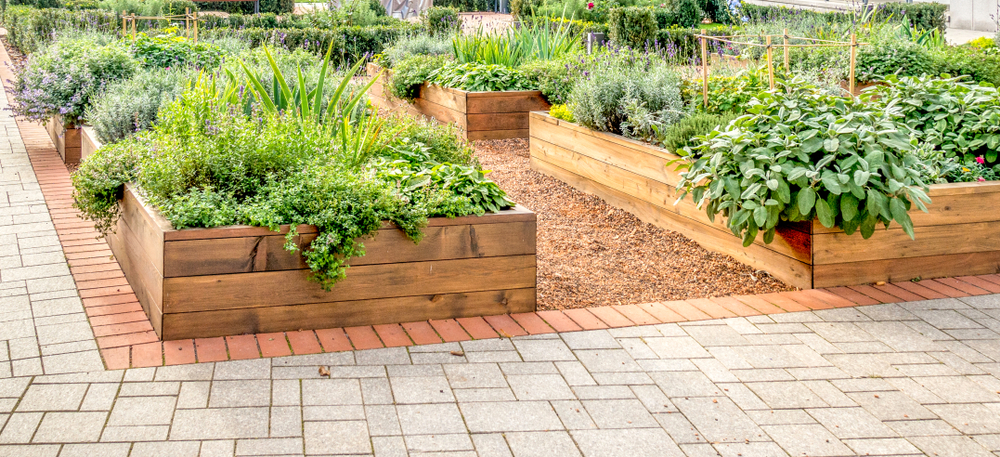Starting your first garden can be an exciting and rewarding experience. Whether you want to grow your own vegetables, flowers, or herbs, gardening allows you to connect with nature and enjoy the fruits of your labor. However, if you’re new to gardening, it can feel overwhelming at first. But with the right planning and a few helpful tips, you’ll be on your way to creating a beautiful and productive garden. Explore a step-by-step guide to help you start your first garden.
1. Decide What to Grow
Before you start planting, it’s essential to decide what you want to grow in your garden. Take into consideration the amount of space you have, your climate, and your personal preferences. Beginners often choose easy-to-grow plants like tomatoes, lettuce, peppers, and herbs such as basil or mint. If you’re interested in flowers, marigolds, sunflowers, and daisies are great options for beginners.
Consider the growing season in your area and which plants thrive in your climate. You can research the best plants for your region or consult a local gardening center for advice. Starting with a small selection of plants will make the gardening process easier to manage, especially if you’re just beginning.
2. Choose the Right Location
Choosing the right location for your garden is crucial for success. Most plants need at least 6 to 8 hours of direct sunlight each day to grow properly, so pick a spot that gets plenty of sun. Observe the area throughout the day to determine how much sunlight it gets, and avoid areas that are shaded by trees or buildings.
If you don’t have a lot of space, don’t worry—container gardening is a great alternative. You can grow herbs, flowers, or even vegetables in pots or raised beds on a balcony, porch, or windowsill. Just make sure the spot has good drainage and gets adequate sunlight.
3. Prepare the Soil
Soil is the foundation of any successful garden. Healthy soil provides nutrients and supports root growth. Start by testing the soil to determine its pH and nutrient levels. Most plants prefer slightly acidic to neutral soil (pH of 6 to 7), so you can amend the soil if necessary by adding compost or soil conditioners.
Remove any weeds, grass, or debris from the area where you plan to garden. If you’re planting directly in the ground, loosen the soil with a garden fork or shovel. For container gardening, use a good-quality potting mix to ensure proper drainage and aeration for the roots.
If you’re planting a larger garden or growing vegetables, you may want to improve your soil by adding compost or organic matter. Compost helps enrich the soil, retains moisture, and improves drainage.
4. Plant Your Seeds or Seedlings
Once your soil is ready, it’s time to plant your seeds or seedlings. If you’re starting with seeds, read the instructions on the seed packet to determine the ideal planting depth and spacing. Planting too deeply or too close together can hinder growth, so follow the recommended guidelines for each plant.
For seedlings, dig small holes and gently remove the plant from its container, being careful not to disturb the roots too much. Place the seedling into the hole, ensuring that the top of the root ball is level with the soil surface. Water the plant well after planting.
5. Watering and Maintenance
Watering is one of the most important aspects of gardening. After planting, water your garden thoroughly to settle the soil around the roots. For the first few weeks, keep the soil consistently moist to help your plants establish roots. Once the plants are established, water them deeply but less frequently to encourage deep root growth.
Make sure to water in the morning to allow the soil to dry before evening, reducing the risk of fungal diseases. Use a watering can, hose, or drip irrigation system to ensure that the water reaches the base of the plants and not just the leaves.
As your garden grows, keep an eye out for weeds and remove them regularly to prevent them from taking over. You can also mulch around your plants to help retain moisture and suppress weeds. Be sure to check for pests, and if necessary, use organic pest control methods such as neem oil or insecticidal soap.
6. Fertilizing and Feeding
Most plants benefit from regular feeding to promote healthy growth. Use a balanced, all-purpose fertilizer to provide essential nutrients like nitrogen, phosphorus, and potassium. Follow the instructions on the fertilizer packaging to avoid over-fertilizing, which can damage plants.
You can also use organic fertilizers such as compost, worm castings, or fish emulsion to improve soil fertility. For container gardens, fertilizers may be needed more frequently, as nutrients in the soil can get depleted faster.
7. Harvesting and Enjoying Your Garden
As your plants grow, it’s time to enjoy the fruits of your labor! Harvest your vegetables, herbs, or flowers when they’re ripe, and be sure to pick them regularly to encourage new growth. For example, pick herbs early in the day before they get too hot, and enjoy fresh, homegrown flavor in your cooking.
Remember to take time to enjoy your garden. Whether you’re relaxing in the beauty of the flowers, tasting fresh produce, or just soaking up the peaceful atmosphere, gardening is a rewarding and fulfilling hobby.
Start Your Gardening Journey with Confidence and Enjoy the Rewards
Starting your first garden can be a fun and rewarding experience that offers a sense of accomplishment and connection to nature. By following these simple steps—choosing the right plants, preparing the soil, planting properly, and maintaining your garden—you’ll be well on your way to growing a successful garden. With a little patience and care, you can enjoy the beauty of your plants and the satisfaction of growing your own food or flowers. Happy gardening!

